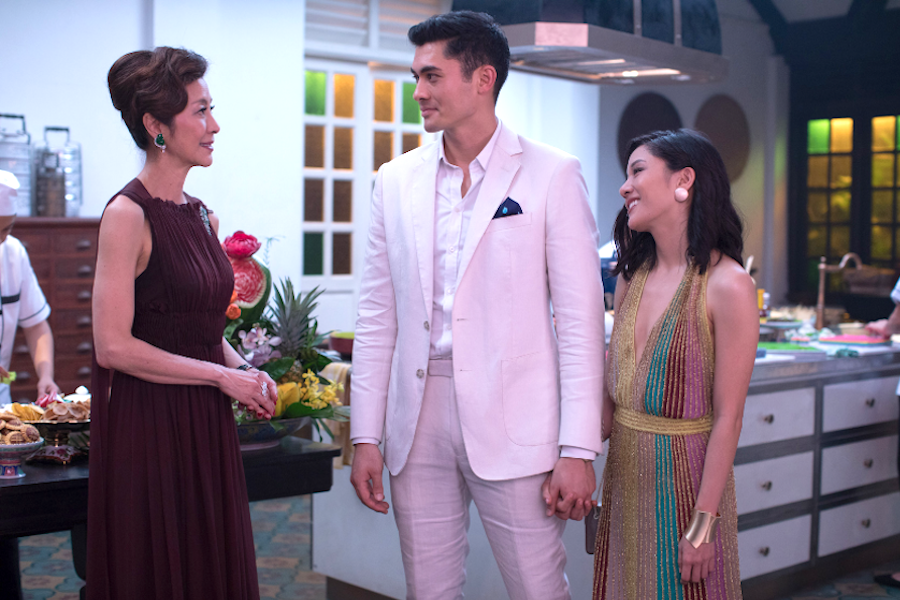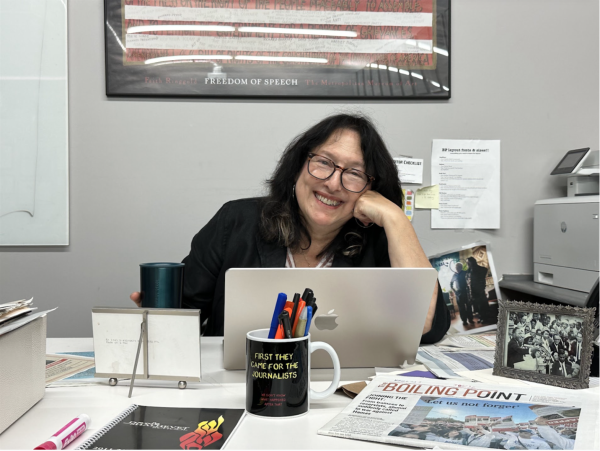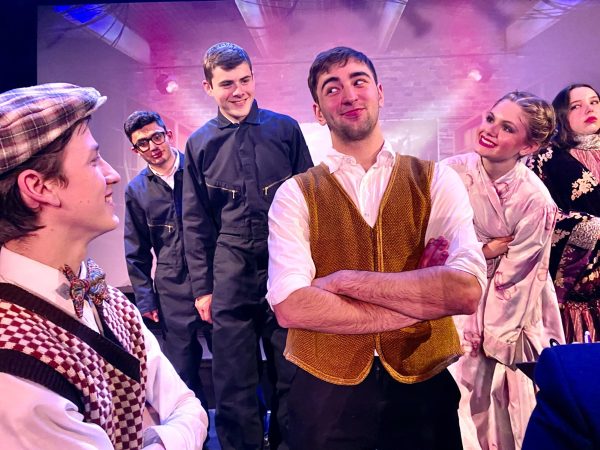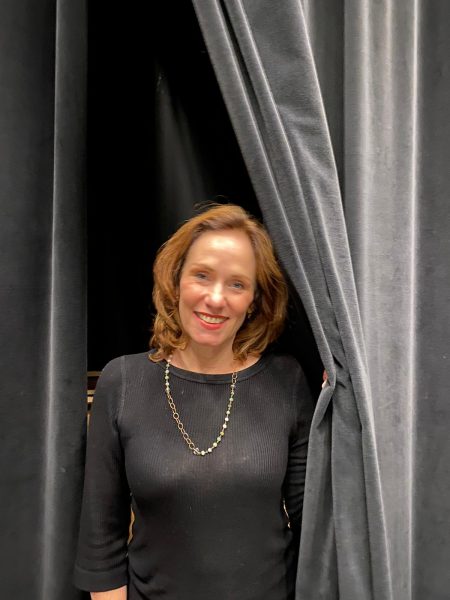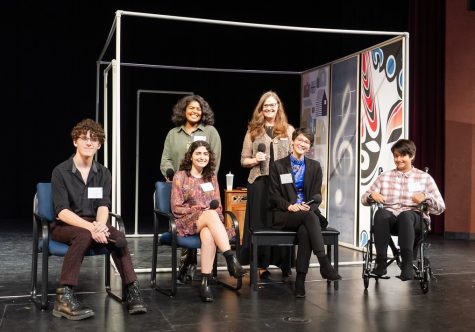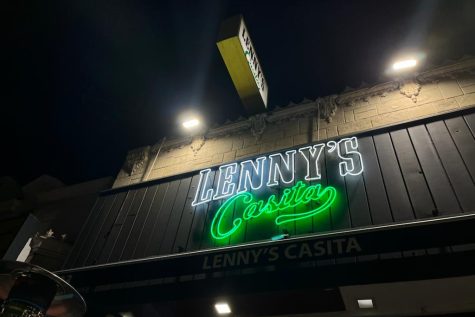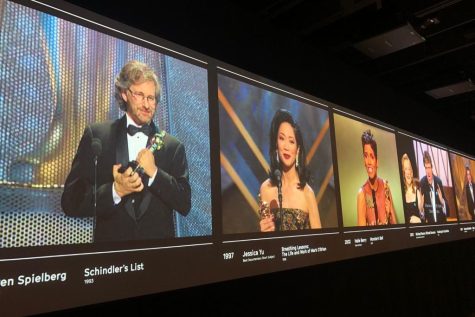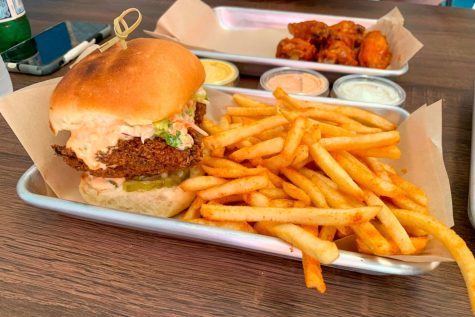Heartfelt and funny, cultures clash in ‘Crazy Rich Asians’
Photo from crazyrichasiansmovie.com
Rachel Chu, right, played by Constance Wu, spends most of the movie trying to gain the approval of her boyfriend’s mother Eleanor, left, played by Michelle Yeoh.
This story won a Best of SNO award.
Hollywood has seen shake-ups recently of some of its most formulaic film genres when the element of race is introduced. Following in the footsteps of Get Out (horror) and Black Panther (superhero), Crazy Rich Asians provides a refreshing take on the predictable genre of the romantic comedy.
The film, which smashed expectations by grossing $89 million in its first two weeks, follows the fictional Rachel Chu, an Asian-American of Chinese descent, as she accompanies her boyfriend Nick Young to his best friend’s wedding.
Unbeknownst to Rachel, Nick, who like Rachel lives in New York, belongs to one of the wealthiest families in Singapore. We are soon introduced to his family, from wacky playboys who buy anything they want to troubled characters who have deep secrets.
Rachel is quickly thrust into an unfamiliar world of harsh judgment, strong family duties and, above all else, ridiculous excess. In the hectic fews days before and including the wedding, Rachel and Nick’s relationship is tested and at a point seems like it is broken. But, not diverting from the genre, they eventually end up back together.
While the film is the first produced in Hollywood with an all-Asian cast since The Joy Luck Club, released in 1993, Crazy Rich Asians does not merely try to sell a generic story to a new generation. Woven into its entertaining and surprisingly heartfelt plot is a hilarious assortment of jokes poking fun at Asian stereotypes and timely criticism of American culture.
One of the film’s funniest moments is when word first spreads of Nick and Rachel’s relationship through a massively complicated network of connections, all within minutes of Nick inviting Rachel to the wedding. Another is a playful take on the classic pre-wedding getting-dressed montage.
There are several standout performances, both comedic and dramatic. The rapper Awkwafina — who plays Goh Peik Lin, Rachel’s college friend and confidante — provides comic relief throughout the movie. Gemma Chan, playing Nick’s cousin Astrid, is a standout as a trendsetting fashionista with a heart of gold who lacks the confidence to stand up to those who hurt her.
Making the film was not without cultural challenges of its own. It has become a trend to see major Hollywood producers recast minority roles as white actors, in the belief that it is the only way to sell the movie. Kevin Kwan, who wrote the bestselling novel on which the film is based, resisted such an outcome. According to Entertainment Weekly, Kwan was approached by a producer to cast Rachel as a white woman. He did not.
Click here for showtimes at local movie theaters.
In fact, what becomes abundantly clear watching the film is the necessity of Rachel’s “culture shock” experience, which is an exploration of the difference in lifestyles among two groups who most would categorize as the same. Coming from an Asian-American household, Rachel expects to have an understanding of Asian culture. Her naivete is exposed as she picks a modest red dress to wear as her first impression to the Young family’s over-the-top gathering, only to be laughed at.
Rachel’s is not the only eye-opening experience of this movie. Personally, I would not have been aware of just how different Asian and Asian-American cultures are from one another. What I experienced was similar to if someone did not understand the difference between Sephardic and Ashkenazi Jews. While both groups are Jewish,they have different experiences and are viewed and judged differently, by both outsiders and each other.
It is this theme that is more earnestly depicted in the main conflict of the film between Rachel and Nick’s disapproving mother, Eleanor. Instead of the common trope of a mother being overprotective of her son, Eleanor’s reasoning for not wanting Nick to marry Rachel is to preserve her family.
In contrast to the American idea of going out and following one’s love and passion, Eleanor believes family responsibility comes first, and that if everyone chased their dreams there would be no sustained success.
It is undoubtedly refreshing to see another way of life presented — especially at a time when American self-obsession is ever more popular and many Americans ignore the rich history of Eastern cultures, which stretches back thousands of years before the United States even existed.
Adding to the plot are a rich soundtrack and cinematography. Exemplifying both the similarities and differences between Asian and Asian-American culture, music supervisor Gabe Hilfer includes Chinese covers of American pop songs by artists such as Coldplay and Madonna.
Set in the beautiful city-state of Singapore, there is no shortage of memorable shots. From opulent palaces to the futuristic skyline, to the breathtaking coastline of nearby Langkawi, Malaysia, it is hard to not to want to book a flight straight from the theatre.
As book-to-film adaptations often find, there are several subplots which seem rushed in order to give Rachel and Nick’s story the spotlight. This leads to rushed resolutions — most notably in Astrid’s subplot, when during her breakup from her husband the plot rushes to make her into a heroine despite serious unaddressed flaws. Gemma Chan’s acting deserves more screen time, which we hope she will get in the reported sequel.
But it’s a minor flaw. Crazy Rich Asians is a fun and captivating rom-com, that meanwhile milestone for Asian representation in Hollywood. The film’s contemporary comedy, enthralling plot and social commentary make this film a strong wake up call for a genre that seemed dead.

Jacob Joseph Lefkowitz Brooks was editor-in-chief during the 2019-20 school year and is now a student at the University of Toronto.

